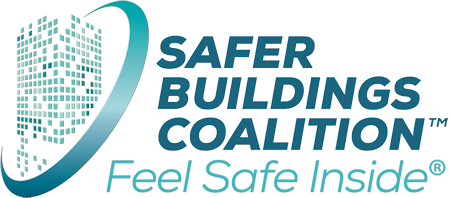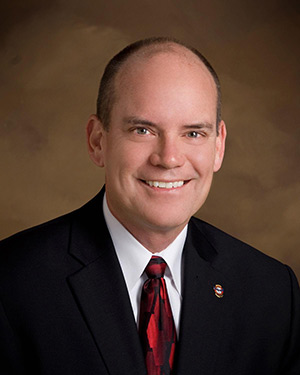From the Chief’s Corner: Stick a fork in it...
Chief Alan Perdue (Ret.), CFO, FM, Posted on September 23, 2021
For many of us when it comes to receiving information or news about a particular issue, its common to hear someone say something related to the phrase first used by King James I of England in 1616 who said “No news is better than evil news” or as later modified “No news is good news”. But that is not always the case. I am pleased to report some great news and that is the fact that the 2022 edition of NFPA 1225 Standard for Emergency Services Communications has been completed and officially issued. So, what does that mean for the Emergency Responder Communications Enhancement System (ERCES) stakeholder community? As many of you know, newer editions of NFPA standards often provide opportunities to better address the regulation of a particular component of the built environment. In the case of NFPA 1225 that relates to ERCES. As each year passes, our experiences and technological advances help shape where the standard needs to ultimately be for the benefit of all stakeholders. First and foremost is the safety of the public and our emergency responders. Additionally, it allows gray areas to become better focused providing clarity for those following and enforcing the standard. When Can A New Edition of the Standard Be Used? When approved by the Authority Having Jurisdiction. I often hear AHJ’s say, the new published edition of the standard is great, and I wish I could use it, but we do not or will not be able to adopt that version until our next adoption process which unfortunately is years away. No worries my friends, NFPA provides an avenue for that situation within the standard and it is located within Chapter 1 Administration. As an example, let us say your jurisdiction adopts the 2016 Edition of NFPA 1221. If you look at Section 1.5 Equivalency of the 2016 edition it states, “Nothing in this standard is intended to prevent the use of systems, methods, or devices of equivalent or superior quality, strength, fire resistance, effectiveness, durability, and safety over those prescribed by this standard”. That same language is also located within the 2019 edition of NFPA 1221. As a former Fire Marshal/Authority Having Jurisdiction, I found it very beneficial to be able to look forward and allow the use of a newer edition of a consensus standard. There was considerable comfort knowing that what I would be permitting to be used had been through an open, consensus-based process whereby many people participate in the code development process providing valuable insights. One caveat to that permission was that the applicable sections of the standard being used, must be used in its entirety. One could not pick and choose between different editions. What’s Changed? There are too many changes within the 2022 Edition of NFPA 1225 to include in this article, but I do want to highlight a few key areas. One of the most important foundational aspects of the changes is that all the technical provisions related to ERCES were placed into their own chapter which is Chapter 18. Additionally, definitions are in Chapter 2 and the testing requirements are in Chapter 20. Let’s take a look at some of the significant changes: Changes to Chapter 2 Definitions included new definitions were created for backbone cable components, frequencies, frequency license holder, ERCES, link budget and RF system designer. These terms were defined to provide more clarity around their use within the standard. Changes within Chapter 18 Technical Provisions included adding the term Frequency License Holder within multiple sections of the standard to ensure that those responsible for providing permission to retransmit on a licensed frequency is included in the process of planning, reviewing, installing, and testing of in-building ERCES. It was imperative that this connection of these stakeholders be a requirement within the standard. Also notable are the significant changes within the pathway survivability requirements of the standard located in sections 18.12.3.3 and 18.12.3.4. The changes better clarify the difference between buildings less than 75’ in height and those greater than 75’ in height often referred to as high-rise. The new requirements also give credit for buildings that are protected with NFPA 13 fire sprinkler systems and clearly identify what fire rating is needed if required for the backbone. Lastly, look at section 18.9.3 which addresses the noise floor and what actions one must take to ensure they do no harm to the macro system. Chapter 20 Testing requires that the system be initially tested for acceptance and then periodically thereafter. The frequency of testing was clarified, and the method of testing required was left to the AHJ and Frequency License Holder. Those individuals conducting testing may use multiple methods as described within Annex A Section A.20.3.10. Those methods include SINR, BER, POLQA, etc. It is recommended that AHJ’s look at best practice methods for their jurisdiction. Accessing the Standard Many of you have heard me say that if you are in the ERCES business, you must have a copy of the standard or I put you in the “Chuck and a truck trying to make a quick buck” category. Why, because if you do not read, understand, and follow the rules you are creating more problems than solutions. Visit the NFPA website at nfpa.org and go to the codes and standards section. Sign up for a hard or electronic copy of the applicable standard or standards that your organization will be utilizing. As American baseball player and commentator Dizzy Dean said back in the 1940’s when referring to a pitcher whose time on the mound was over: “You can stick a fork in him folks, he’s done. So, to is the development of the 2022 Edition of NFPA 1225. Now is the time to utilize the great work so many people put together in the code development process. Review the document, utilize the document, and lets all work together to make the design, installation, and maintenance of ERCES the best it can be. Remember the safety of our emergency responders depend on it!
|


